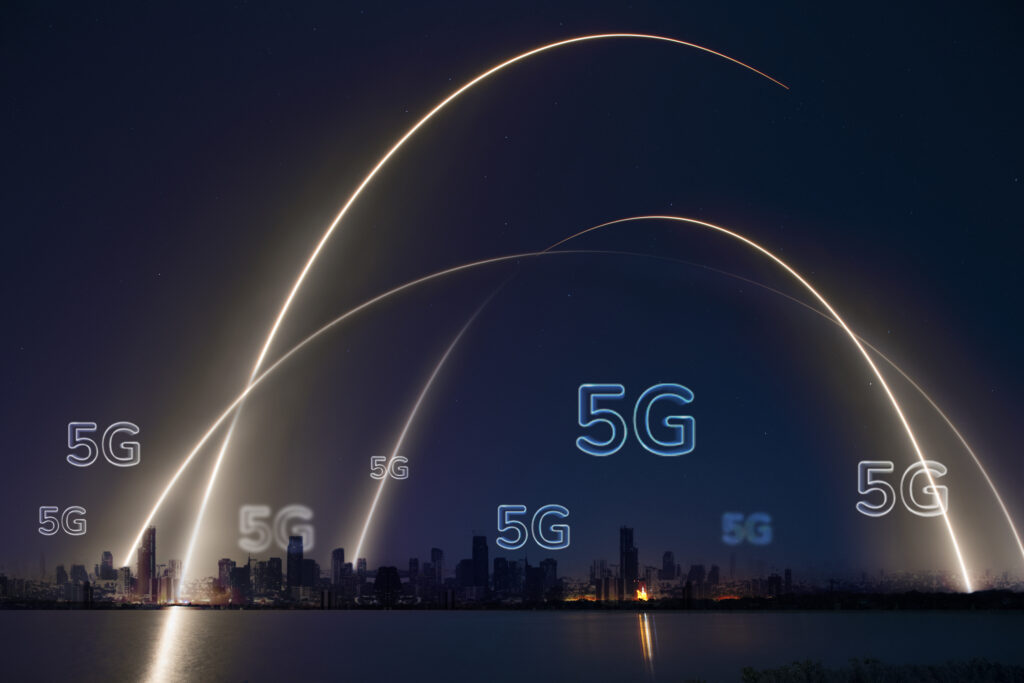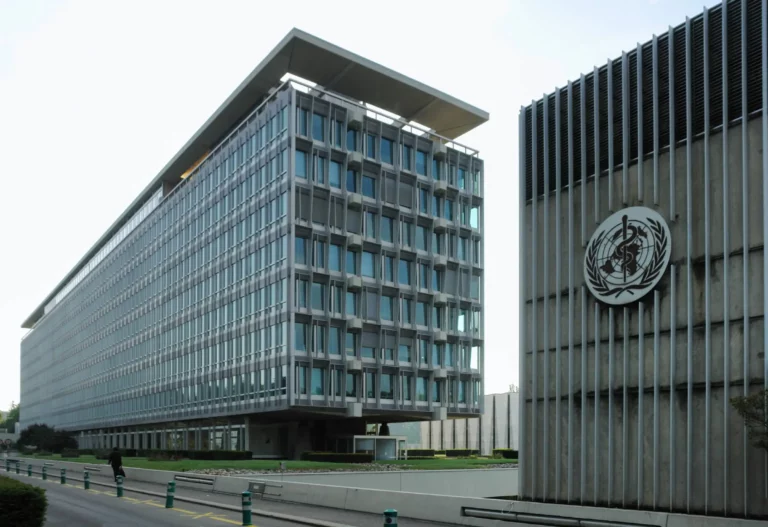Public Benefit or Big Profits for Big Telecom? Here’s What’s Really Driving the 5G Rollout.

Proponents of 5G say the technology will address the “digital divide” by increasing online services to the underserved — but critics say 5G is a marketing move the telecommunications industry is using to put their equipment up everywhere and strip away regulatory oversight.
This article was originally published by The Defender — Children’s Health Defense’s News & Views Website.
Editor’s note: This is the second in a three-part series examining key questions in the public debate on the safety of wireless radiation. Part I addressed the question, How did the FDA arrive at its position on cellphones and cancer? Part 2 asks, What’s behind the rollout of 5G?
Telecom companies promote 5G, the “next generation wireless network technology,” as being faster and able to handle more connected devices than the 4G LTE network. And they assure consumers the result will be increased access for underserved communities that lack reliable internet connectivity.
But critics — including Theodora Scarato, executive director of the nonprofit research and education group Environmental Health Trust — said the 5G rollout is more about corporate greed than it is about helping people access fast and reliable internet.
5G uses higher frequencies on the electromagnetic radiation (EMR) spectrum than prior wireless technologies and, according to the Federal Communications Commission (FCC), can operate in these radiofrequency (RF) bands: low-band (less than 1 GHz), mid-band (1 to 6 GHz), high-band (24 to 95 GHz) and unlicensed bands (5.9, 6 GHz and above 95 GHz).
Scarato told The Defender that 5G is a marketing term used to promote promises about “bridging the digital divide” when what’s really being marketed is the deregulation of the wireless industry.
“I see it as a corporate land grab. That’s what it is,” she said.
The wireless industry creates and uses the hype around 5G to install their equipment faster and more cheaply, Scarato said. They do this by convincing public officials that communities need this technology and that the established public review processes are too slow and must be streamlined, to allow companies to deliver the technology rapidly and with little oversight.
5G push prioritizes profits over people
What this means for the wireless industry is that they are able to expand their infrastructure without having “to deal with all the people,” Scarato said.
It’s people — from the perspective of the wireless industry, she said — that are the “roadblocks to getting your equipment up because people don’t like it. It’s ugly. [They worry about] the radiation, the fire risk. All of these reasons why people want a more responsible placement for this equipment can be pushed aside when you just change the rules.”
Kim Mack Rosenberg, Children’s Health Defense (CHD) acting general counsel, said, “It is critical that we dig below the surface to try to understand the motivation of corporations in expanding 5G networks.”
Rosenberg told The Defender:
“While companies tout that 5G allows for greater connectivity, more reliability and helps to close the digital divide, the bottom line is, in many respects, the actual bottom line for telecom companies and related industries.
“5G creates the potential for extraordinary profits, hence the push for more and more deregulation. However, deregulation carries with it significant risks.”
Scarato pointed out that over half the states in the U.S. have legislation in place that allows them to fast-track approval of 5G and small cell technology.
“Policies at every level of government, local, state, and federal are loosening — fast-tracking — and allowing corporations to put their equipment up really close to where we live, work and play,” she said, adding that public officials put forward such legislation by reasoning that, “Well, we have to have this new technology, so we have to make it easier for companies.”
CHD, joined by a coalition of community and environmental groups — including Fiber First LA — that is advocating for safe technology in March sued Los Angeles County in California for adopting amendments that allowed the fast-tracked proliferation of wireless infrastructure without due process and without residents’ right to appeal.
Brenda Martinez, Los Angeles County resident and activist with Fiber First LA, said that for years she has witnessed public officials, such as the county board members, “use lower income community’s needs to push the agenda of Big Telecom.”
Martinez — a fellow with CHD’s EMR program — told The Defender that before the COVID-19 pandemic, the telecommunication companies offered only fiber optic (wired) connection, which is faster than wireless internet, to more affluent areas of LA.
“Lower-income communities were stuck with wireless — which is more profitable to the telecom industry and more expensive for the people,” she said.
During the pandemic, lower-income communities experienced “very expensive internet fees, scams from telecom and faulty hot spots … despite the fact that we had thousands of new antennas and cell towers popping up,” Martinez said. “I hope everyone can see now that those bills being pushed so hard are not for the benefit of their constituents.”
The U.S. House of Representatives Committee on Energy and Commerce in May advanced seven bills that lawmakers said are intended to streamline and speed up the deployment of wireless infrastructure, including 5G, across the country.
Odette Wilkens, a technology attorney for more than 20 years, said the deployment of wireless infrastructure such as 5G — rather than fiber optics, which she claims is a safer, superior technology — is likely to exacerbate, not solve, the digital divide and will serve the interests of the wireless industry, not the interests of U.S. citizens.
Wilkens, who also is president and general counsel for Wired Broadband Inc., a nonprofit that advocates for hard-wired high-speed internet, told The Defender:
“The phrase ‘reducing regulatory barriers’ is being used as a euphemism to erect barriers against local government and residents, to take away their right to hearings and their right to be heard.
“In fact, regulations are designed to protect local government power and residents’ health, safety and welfare, and to preserve residents’ right to due process.”
5G rollout ‘outrageous’ for ignoring harms
The infrastructure being installed as part of the 5G rollout not only carries 5G frequencies but may also include 2G, 3G and 4G, Scarato noted. “So when you get a 5G small cell in front of your house, it might be called that — but until you actually look at the technical specs, it could be a variety [of frequencies],” she said.
Small cells are individual wireless transmitters distributed roughly every 100-450 meters that can be mounted on utility poles or other structures, such as a fence. Before 5G, most wireless networks were built using a system of macro transmitters in the form of cellular towers. The 5G network uses both cellular towers and small cells.
Rosenberg said deregulation not only carries the general inherent risk of decreased oversight, but it also opens the door for other risks, too.
“There are serious human health concerns with 5G, safety concerns regarding animals and the environment, and privacy and cybersecurity risks, among others,” Rosenberg said. “As is the case with many industries, we are wise to not accept at face value that expansion of 5G networks and access to these networks is good for us.”
Dr. David Carpenter, environmental health sciences professor at the University at Albany, State University of New York (SUNY), said it is “outrageous” that the U.S. government is allowing the rollout of 5G without any research to document that it is not harmful.
Carpenter — who received his doctor of medicine degree from Harvard Medical School and now directs the University at Albany’s Institute for Health and the Environment — told The Defender, “The 5G rollout is of benefit to industry, not to the public, and is causing major harm to everyone.”
He added:
“It is known that 5G doesn’t travel so far and is easily blocked by rain, leaves and other physical barriers, so the telecommunication companies are placing these mini cell towers in urban areas in front of every sixth to eighth house.”
According to industry experts interviewed by the Environmental Health Trust, 5G antenna radiation is emitted as a concentrated rather than a diffused beam, with output power 20 to 35 times more than 4G, Scarato told The Defender.
Carpenter said 5G is being rolled out without any input or approval from the public.
Consensus is building on 5G dangers
Meanwhile, at least 430 scientists and doctors have signed the “5G Appeal” which calls for an immediate ban on 5G because it “will substantially increase exposure to radiofrequency electromagnetic fields (RF-EMF), that has been proven to be harmful for humans and the environment.”
Additionally, thousands of medical doctors have called for an “immediate moratorium on 5G, wireless smart metering and any other new RF emissions,” as well as the “establishment of public safety limits to be biologically protective against adverse health effects.”
A July 2021 report, “Health impact of 5G,” requested by the European Parliament concluded that the commonly used frequencies of 450 to 6,000 MHz are probably carcinogenic for humans and clearly affect male fertility with possible adverse effects on the development of embryos, fetuses and newborns, Scarato pointed out.
Carpenter said, “It is still uncertain how dangerous 5G by itself is since the higher frequency EMFs are more easily blocked than those from 3 and 4G, which we know can penetrate the brain and the body, causing cancer, cognitive dysfunction and the syndrome of electromagnetic hypersensitivity.”
He added:
“But our existing cellphones and other wireless devices still use 3 and 4G, so these mini cell towers are emitting 3, 4 and 5G. We have strong evidence that excessive exposure to 3G and 4G increases risk of cancer and reproductive abnormalities and triggers the syndrome of electro-hypersensitivity.”
“The result,” Carpenter concluded, “is that simply by walking down a street the public is exposed to excessive levels of the forms of RF we know to be dangerous.”
‘We need the public to understand and to demand change.’
Mona Nilsson, managing director of the Swedish Radiation Protection Foundation, told The Defender that the 5G rollout in Sweden is happening somewhat differently than in the U.S. but is still driven by corporate greed and causing harm to people’s health.
Nilsson — who has co-authored multiple case studies showing that 5G radiation caused previously healthy individuals to become ill — said in Sweden the telecommunication companies are removing 2G and 3G equipment from cell towers and replacing it with 4G and 5G equipment. “It’s the industry that needs that. … It’s not the consumers who asked for this, it’s the industry.”
People are forced into buying new phones that are 5G-adapted, she said, while the industry forces the 5G infrastructure technology onto the public.
5G RF radiation levels are well above levels known to be harmful to human life and wildlife, Nilsson pointed out.
“It’s always the industry’s needs that are the driving factor,” she said, “We need the public to understand and to demand change.”
New York and California residents push back
Residents in New York City — where “behemoth 5G towers” have been going up since March 2022 — are pushing back and demanding change.
Verizon, AT&T and T-Mobile are installing the large new towers — which have five tiers for transmitting antennas — to bring 5G to the city, according to the Environmental Health Trust.
As of July 6, 16 New York City community boards have issued calls for a moratorium on 5G jumbo towers that are being installed in their neighborhoods, Wilkens said.
Wilkens, a New York resident, said:
“That represents an average of 2 million New Yorkers — more than one-quarter of the NYC population — with a clear message: they don’t want the 5G towers and they don’t need them. The market has spoken, and the telecommunications carriers now need to listen.
“The telecommunications carriers are dictating the needs of NYC residents, and that conversation needs to be switched to what NYC residents want and need. We’re being told that the carriers are determining where the gaps in service are, whether for current or future demand, but have shown no documentation justifying either.”
Meanwhile, residents in California — including Hollywood celebrities Ed Harris and Mel Gibson — recently spoke out against the proliferation of the 5G small cells in their neighborhoods.
California resident Julie Levine, founder of 5G Free California, a grassroots organization that networks with scientists, researchers, attorneys and groups around the world to halt 5G, said, “People are already sick from it — including myself.”
Levine also said she opposes 5G for environmental reasons. “It’s an energy-guzzler,” she said.
Scarato said industry experts working with the Environmental Health Trust told her the input power required by 5G antennas can be 3-6 times more than that of 4G antennas.
Next in this series: What’s the science supporting the Federal Communications Commission’s current limits for human exposure to wireless radiation?
The views and opinions expressed in this article are those of the authors and do not necessarily reflect the views of Children’s Health Defense.
This article was originally published by The Defender
Suggest a correction






